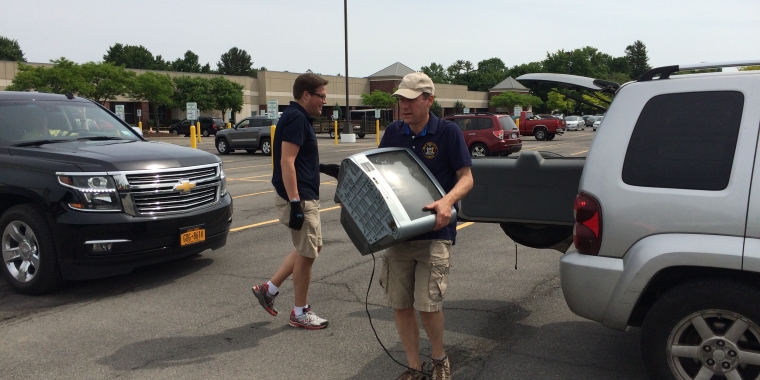
Valesky Tours State's First Cogen Home
In recognition of Earth Day last week, I had the pleasure of visiting a new home that has within it a furnace that may hold the key to reducing energy costs and carbon emissions. But to understand the concept, it might be best to start by considering the makeup of a typical car.
When you are driving down the road, your car is burning gas to run the engine. But it is also using the engine’s energy to create electricity. That electricity powers your radio and other devices in your car.
Now, Imagine what it would be like -- and how much money you could save -- if you could do the same thing at home, harnessing the energy from your furnace or hot water heater to create electricity and using that to supplement your energy consumption. Experts argue such a system could reduce the average homes electricity consumption by 30 percent.
Imagine also how much our state could reduce its overall electricity need if homes everywhere had the same ability, all creating a portion of their own power off of their existing energy consumption.
It is not all that far-fetched. In fact, the technology is already here. And, with the right state action, more and more homes could be built or retrofitted with the ability to generate electricity from other home energy systems.
Furnaces and other units that create electricity while doing their primary job are called cogeneration systems, or combined heat and power, and the technology has been around for some time – but on a much larger scale. Over recent decades, many traditional power plants that produce steam, for example, were redesigned to also produce electricity. Large institutions, like colleges, have begun to follow suit, building or planning to build cogeneration plants to power their campuses. In fact, in the manufacturing industry, onsite cogeneration power plants have become almost commonplace, with manufacturers realizing long ago the potential savings in harnessing the energy that was otherwise lost in their production process.
Now, the technology has improved to the point where it is available for home use.
The home I toured in Manlius recently happens to have the first cogeneration home furnace in New York State. Nottingham Builders and Eagan Real Estate, with the help of New York State Energy Research and Development Authority (NYSERDA), built the home as a model of how green building techniques can be implemented in the typical residential home. It gets better. The cogeneration unit in this house happened to be built by a company with production facilities right here Upstate New York.
Of course, today’s home units are expensive. But I am working with other legislators to find creative ways, through incentives and the energy market, to make these systems more affordable. One way to do this is through tax credits. Another is by allowing homes that are producing energy, to sell excess back to the grid – like when the heat’s on but their lights are not. It sounds simple, but presents a host of challenges.
Still, with energy costs as high as ever and increasing recognition that we must reduce our energy consumption, residential cogeneration systems hold great promise, and show us one more way through innovation that we can all help improve the world around us.


